What is DIY?
Musings on DIY culture, more NOLA artists and music picks
The other day while working at the coffee shop, a curious customer noticed I was wearing an Antigravity Magazine shirt, which led to them asking me a bit about my contributions and what kinds of music I cover. I should expect this question but I always find it difficult to answer without sounding like an asshole, especially since I don’t typically cover the often thought-of New Orleans music and all that jazz (pun intended).
I’m paraphrasing here a bit but I said roughly, “I cover alternative music, DIY, that sort of thing.” To which they approximately responded, “So like garage rock?,” a totally fair response.
“DIY” could reasonably be inferred as the shitty bar band your boss plays in with his lawyer friends or that guy from high school who never got past his delusions of being the next Nirvana or whatever Joe Schmoe is making music in their garage (if they’re lucky enough to live in a home with a garage, much less own a home).
Do-it-yourself— that’s all DIY technically stands for but I used the term like it was a music genre in the context of the conversation. So the follow-up question of “What is DIY?” is a natural one.
DIY really isn’t a genre so much as it is a means of participating outside established music institutions like major labels, venues, etc. Even defined that way, DIY is such a vague, unwieldy term.
It’s like “indie” in that it means a very specific thing AND nothing at all. Indie can be The Pixies but it can also be Thundercat, two acts that might as well be on two different ends of the musical galaxy.
To make matters even more confusing, almost anyone can be DIY by that definition. An artist could be making hip-hop, electronic, folk, metal, any genre really and be classified as DIY so long as they are independent and self-sufficient outside of those institutions.
Every couple of years, I find myself coming back to this question because, honestly, I need the mental refresher to communicate it coherently. And to avoid turning this into a college research paper, I won’t get into specifics too much about the roots of DIY in early punk music or the anarchist ethos it embodies.
Rather, I’d like to talk a bit about the scenes I witnessed as an early music fan/perpetually aspiring music journalist and why those moments still inspire me to this day.
To make a long story less than 400 words (hopefully), I went to college in south Georgia from about 2015 to 2019, about an hour from the FL/GA line. Musically, that neck of the woods was known for Luke Bryan and Thomas Rhett. It’s not the kind of place you move to in order to find a vibrant underground music scene unless your definition of that was getting plastered in a cotton field somewhere while a moon-faced man sings about railing the farmer’s daughter.
After high school, the only direction I had as a nerdy kid caught in the crossfires of cul-de-sacs and cow pastures was to:
A.) get out of Florida
B.) idk maybe become a rancher?
So I went to college in the “real South” to pursue these lukewarm dreams. There I would be exposed to the student press for the first time, which enabled me to recklessly explore my shitty music tastes with the hope of becoming a music journalist.
I started seeking out undercovered artists locally, which eventually brought me to my first-ever house show in Statesboro, GA at the Birdhaus to see an emo band called Birdperson fronted by Aaron Givens (who also ran the venue and would go on to be bassist for the Holy Ghost Tabernacle Choir).
It was probably 2018 at this point and I was extremely late to the party when it came to the Statesboro scene. They were entering the end stages of the House Venue Cycle following a police raid due to the neighborhood cracking down on their existence.1
I made the 3-hour drive up with some friends to attend “Hausfest,” a weekend music festival of local and touring DIY bands. I don’t remember a lot from this show other than thinking “man, this feels like the epicenter of weed-emo in Georgia” and “wow, how many people and animals live here?”
But what did stick with me was the oppressive realities of being an offbeat creative in the deep south, even in a more liberal college town. And this community of local, young, independent artists collectively changed their realities in the face of that world.
It wasn’t just Insomnia Cookies and Chipotle right outside campus anymore. There’s a guy with a ukulele playing folk punk and a touring metal band that smelled like they had been festering for a day and a half in a touring van with no AC! The DIY ethos gave these college kids the agency to build their own world of possibility.
Fast forward a year to 2019, where I had graduated from college and got a job at a newspaper even closer to the Florida/Georgia line in a little town called Valdosta. I happened to move there at the perfect time, though as I was able to hop onto the House Venue Cycle at the Valdosta DIY House while it was in its honeymoon phase.
There, I was able to involve myself in the scene as much as any journalist could. I tried to attend every show I could, take photos of every set I saw and interview the bands and people that were making it happen.
That DIY house was the only place in this town that consistently offered all-ages music which lent to its often diverse crowds of every demographic. Being a college town like Stateboro, the Valdosta scene quickly grew to become the creative heart for a variety of music within the city.
Bands like Mama Stone, Heaven Slept, Box Prince, Dying Whale, DEDpro, and You’ll Never Die, (hmmm, noticing a death trend), among others, were like the venue’s house bands.
I wasn’t around for the glory days of DIY in the ‘80s and ‘90s as some folks say, but I still saw the potential and radicalism a space like this provided for people.
It was a safe space for queer and trans folks in heart of the Bible Belt. It was donation-based so no one was turned away for lack of funds in a city with a quarter of the population living under the poverty line. The house they rented was strange and old enough that landlords and neighbors didn’t seem to care, despite being a city with strict ordinances.2
Even the artist/fan dynamic is skewed toward creating something extraordinary rather than passively consuming art or running up a bar tab. People were able to contribute to the space with their art in the form of paintings, zines, photography, jewelry or whatever creative venture they had to offer.
In what was possibly my greatest achievement during my time at the newspaper, I had a Sunday front page story, above the fold, about the DIY scene and Alan Sifuentes, who ran the venue. The editors made me interview and shoehorn in a story about an independent band from the ‘70s but through that I was able to discover the long-standing spirit of DIY that passed on from generation to generation.
Every person I talked to remembered their first house show and feeling like they found something for themselves. An accessible place, where you could participate in art and music you enjoyed with like-minded people. It would inspire them to start their own bands, or in the case of the Sifuentes and the Valdosta DIY House, their own all-ages venue.
DIY is hard to kill. Once you get the idea into someone’s head that they can do something, with or without the permission of anyone else, they will dream and strive to make it happen again and again.
Every House Venue Cycle ends with the place shutting down, usually after just a couple years, but a successor always seems to fill its place. Bands dissolve and scenes change but the folks affected by it, who were sometimes teenagers seeking all-age shows, come back and make their own version.
Whether it was the Birdhaus or the Valdosta DIY House or even the punk scenes of yore, what mattered was giving everyone the ability to create and be themselves (corny as that may be).
It’s true democratization of power through art. Everyone is given to opportunity to contribute in whatever way they can, often despite the larger world around them.
None of the artists mentioned in these scenes went on to be acclaimed bands selling out tickets for Live Nation or signing to major labels. Most artists don’t get to that point anyway. But the difference between those bands and the band your boss is playing in with his lawyer friends is simple.
It’s not about being self-made or booking your own shows or recording your own music. That can be part of it but if I were to answer the question “What is DIY?” today, I’d say it’s taking ownership of your creative power while giving others the ability to do the same.
More New Orleans Artists
As the old writer’s adage goes, “the best way to find mistakes is to publish,” and with something as assuredly precarious as putting together a scene report for New Orleans, it was inevitable that I’d miss some artists for the list. With that in mind, I’m treating it as a living document where I can continue to add artists as I find them. Here are 10 more I missed from the initial wave but have updated online since publishing:
HiGH (jangle pop/garage)
Mango (jangle pop/dream pop)
Hopeless Fancy (jangle pop/slacker pop)
Brucey (slacker pop)
Hotel Burgundy (indie/pop)
Twin Sugar (chillwave/psych rock)
Get Dressed (post-punk/garage)
Fake Last Name (Ronni What of Spllit’s solo project/post-punk)
Neutral Snap (pop punk)
We Dreamt of Being Ghosts Amongst the Stars (darkwave/drone)
Orbiting Punk Picks
Big Modern - “Parasite”
Released: July 16, 2025
Sydney, Australia egg-punk
Lo-fi, fuzzy garage rock with big, screeching guitar parts. Lyrically, the song is about the digital parasites that pacify us into inaction.
Pisse - “Vernissage”
Released: September 30, 2016
German synth-punk
The crunchy guitars, reverby shouted vocals remind me of a lot of current egg-punk bands. Not to mention the all too uncommon theremin being prominently featured on this track makes it a standout. It’s all German but from the translation online, it seems to be a middle finger to upper-class snobbery. Who can’t get behind that?
Catharsis - “Power”
Released: August 1, 2025
Classic, political post-hardcore with long history in DIY spaces
An anarchist’s 101 on power dynamics with dense lyrics and metal-esque grandiosity. Catharsis is a hardcore band that has been making music for around 30 years, which is remarkable considering how much has changed in punk over those decades. Of course, they have taken breaks within that timeframe but they’ve earned a great deal of acclaim in the underground due to their longevity, involvement in zine culture through their record label CrimethInc and most of all, their devotion to a DIY, anarchist ethos. Also, I found this really insightful interview Bryan Funck of Thou did with the band in 2015 for Antigravity Magazine. Recommend checking it out.
The typical House Venue Cycle is as follows:
Venue opens and starts very small. People already plugged into the music scene are participating and making it a thing. Early adopters start spreading the word, getting people involved.
Honeymoon phase, where more people start hearing about the venue. The folks running the venue are starting to get a grasp on everything involved from booking to promoting, to running sound. People start participating more. New bands form. Artists come together. Ideally, it becomes the epicenter for a new wave of creatives.
The venue becomes either too popular or too problematic and the venue inevitably declines or is outright shut down. Whether it be not making rent or stirring up too much attention through noise or drama, the often less-than-legal or graciously overlooked venue has now reached its boiling point and must end.
The end was only temporary! As DIY can't die and someone usually comes along to resurrect the venue or, at the very least, create a spiritual successor. And the cycle continues.



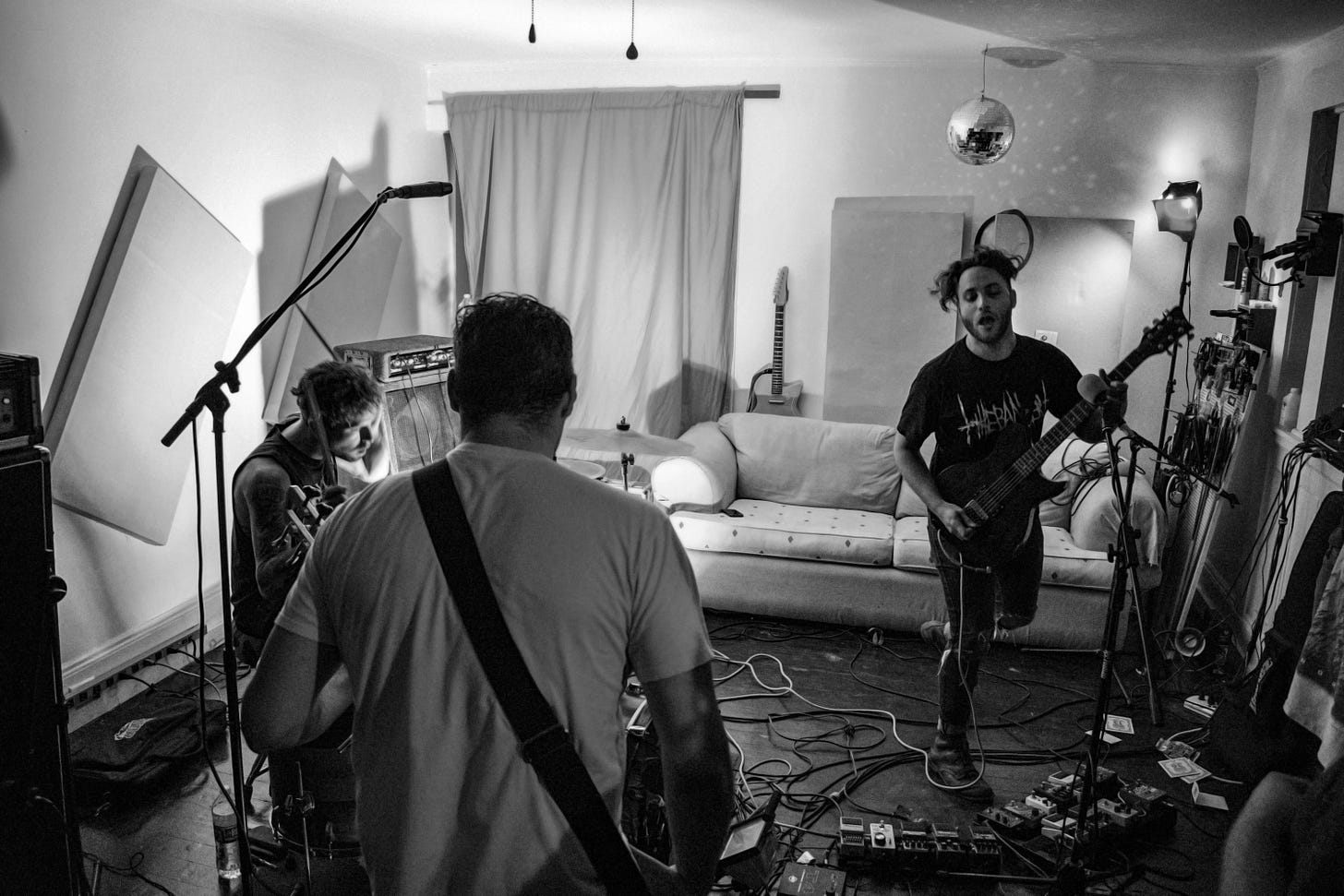
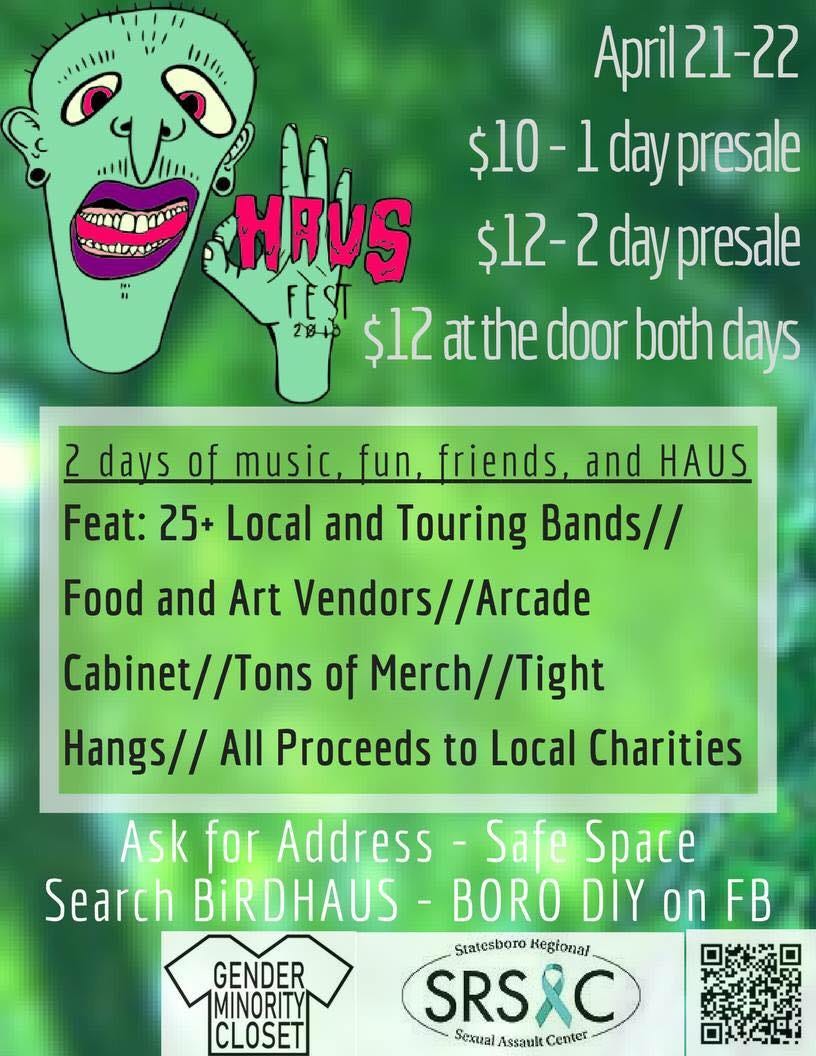
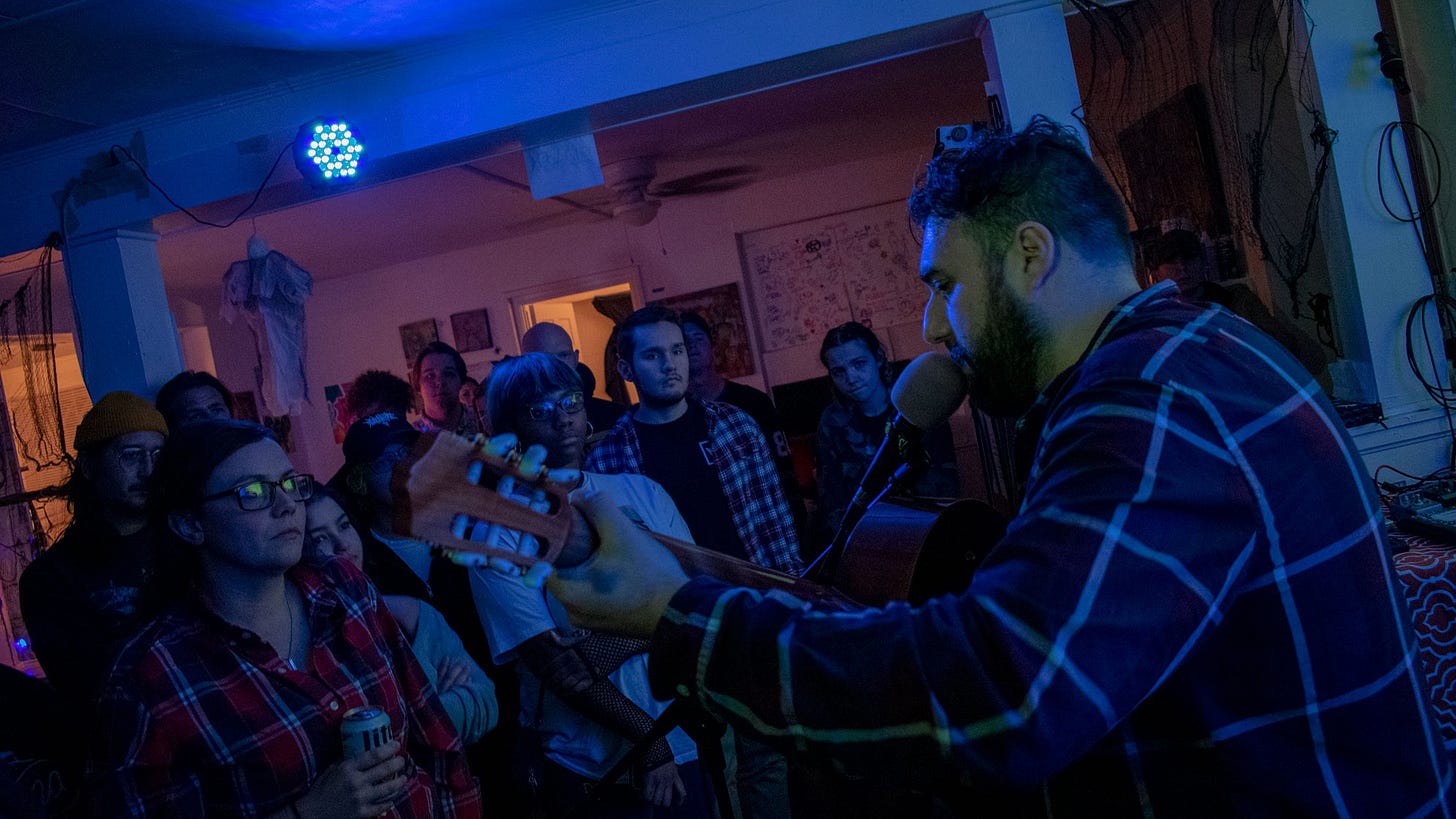
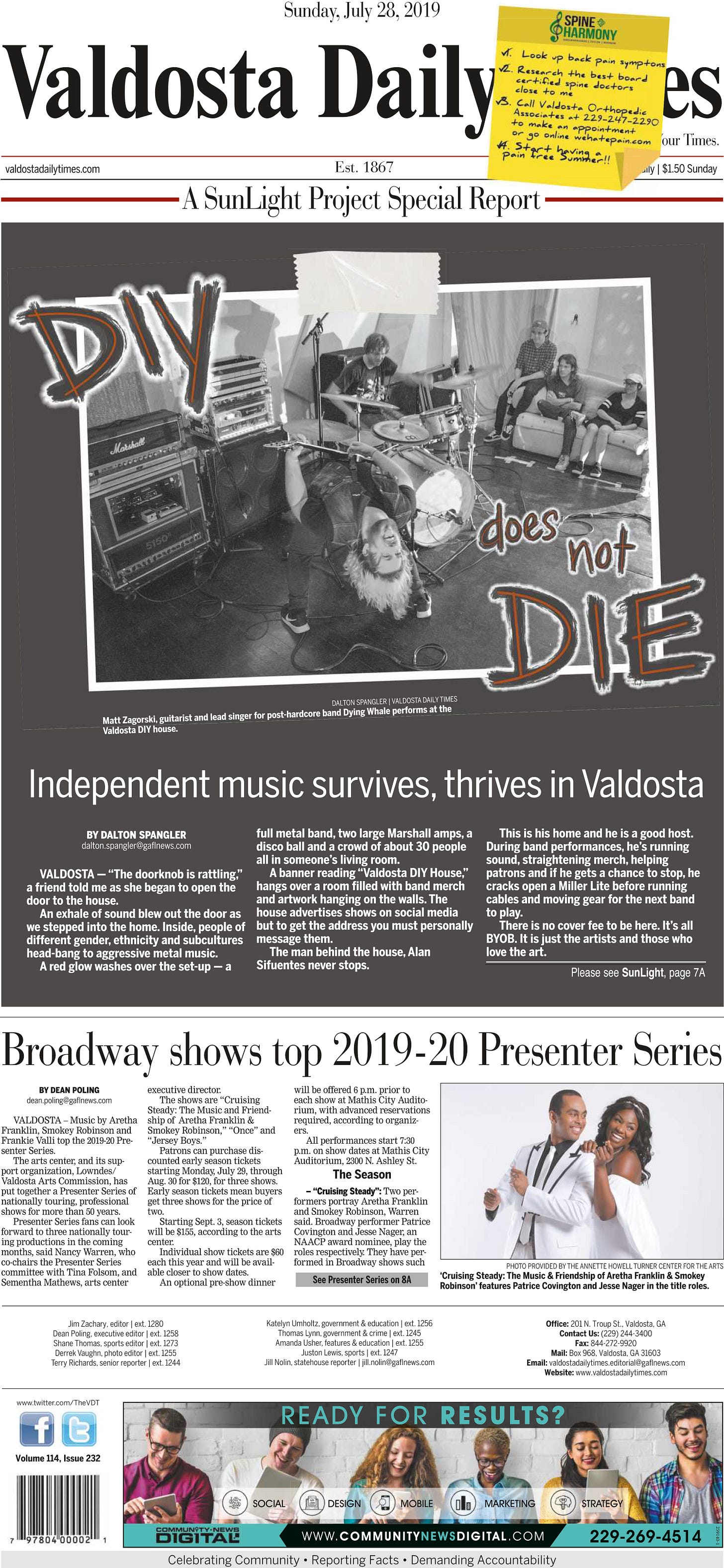

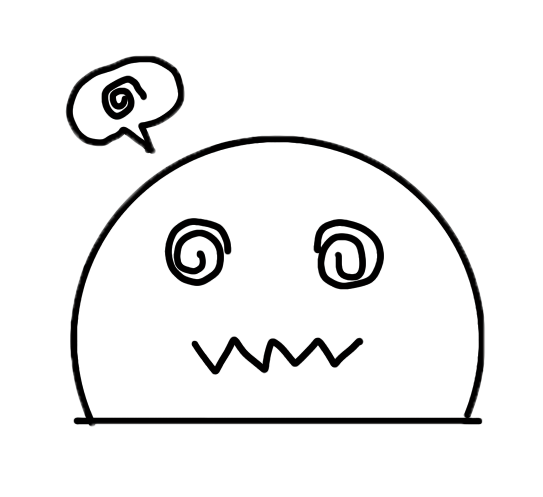
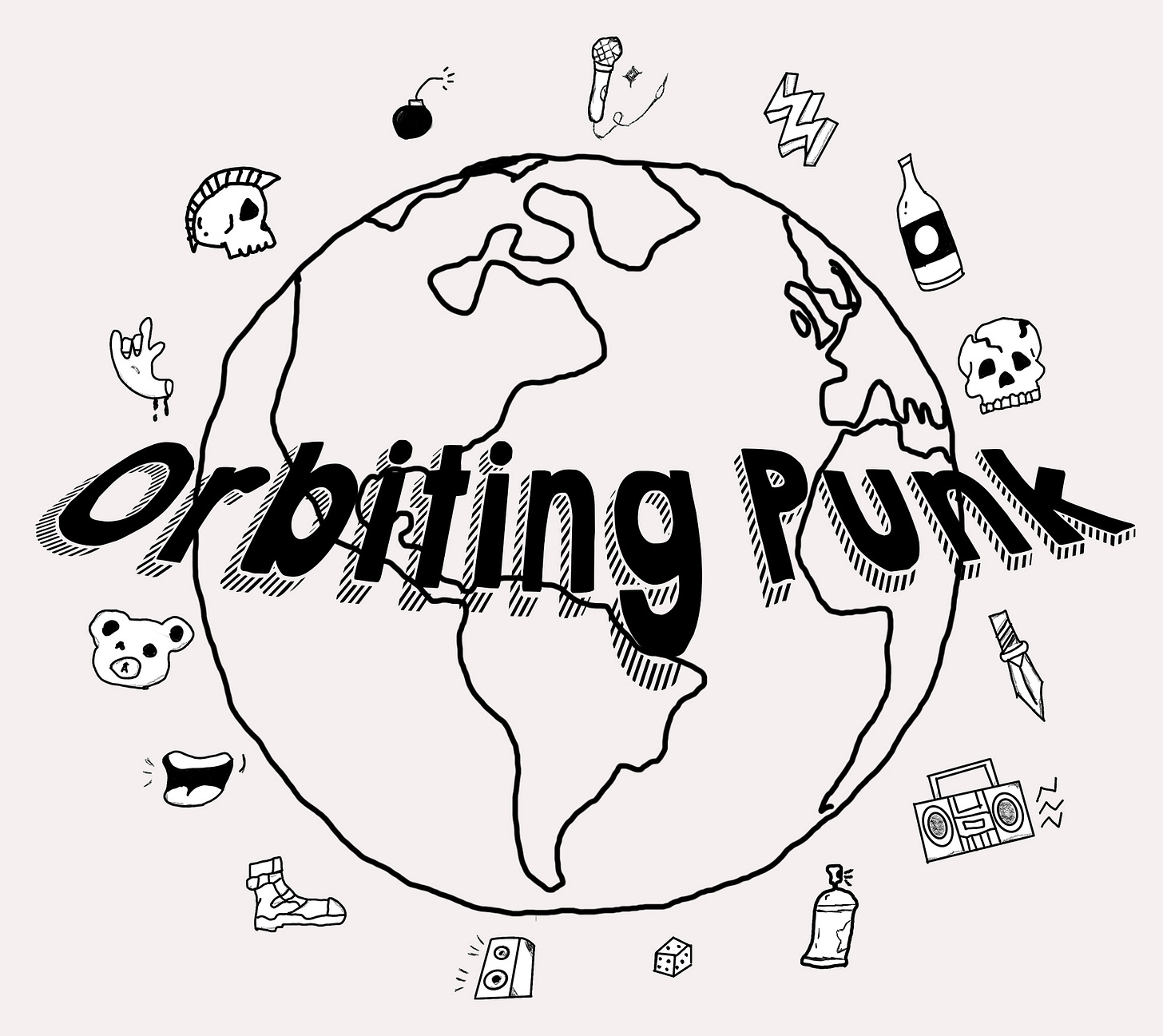
Hell yeah. I just found this publication & feel like I hit a gem.
Hello from a Greensboro NC music scene member.
So stoked I stumbled on your publication. Personally, DIY to me has always been synonymous with folk punk and the like. (Or maybe I just label it all folk punk, idk 😆). I'm talking Days N Daze, The Taxpayers, Cheschi, Apes Of The State, Mischief Brew, Harley Poe, Holy Locust, Lost Dog Street Band (mainly their Sick Pup album). I just wanna thank you for expanding my mind and ears to some new sounds that I can piss the neighbors off with at all hours of the night 🤣. Rawk on man.